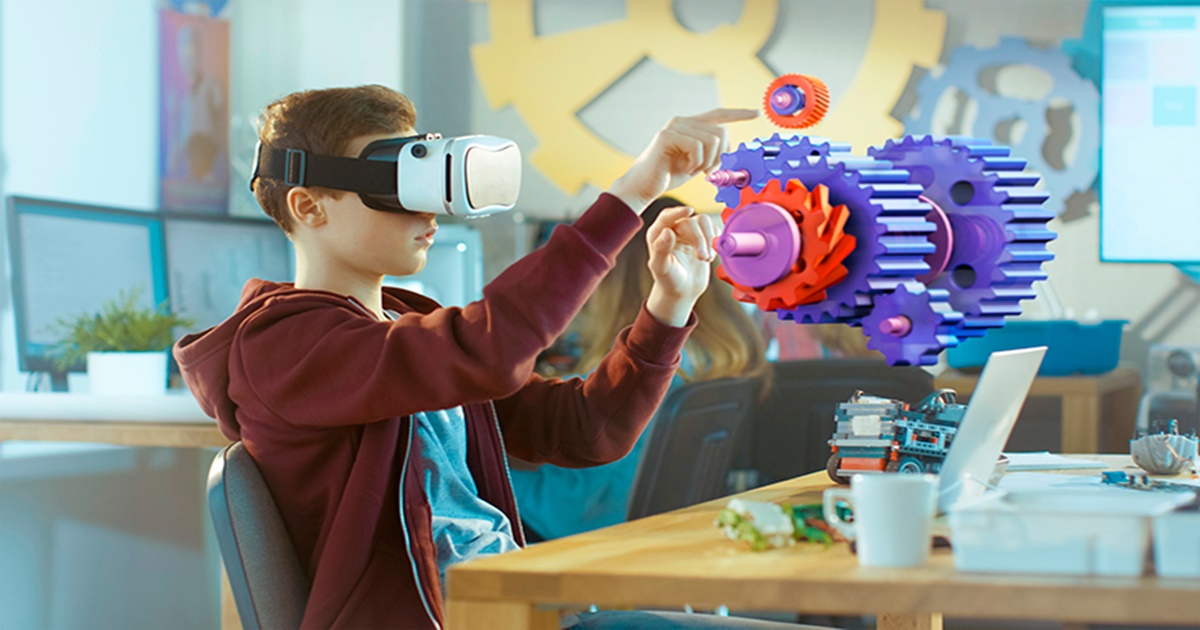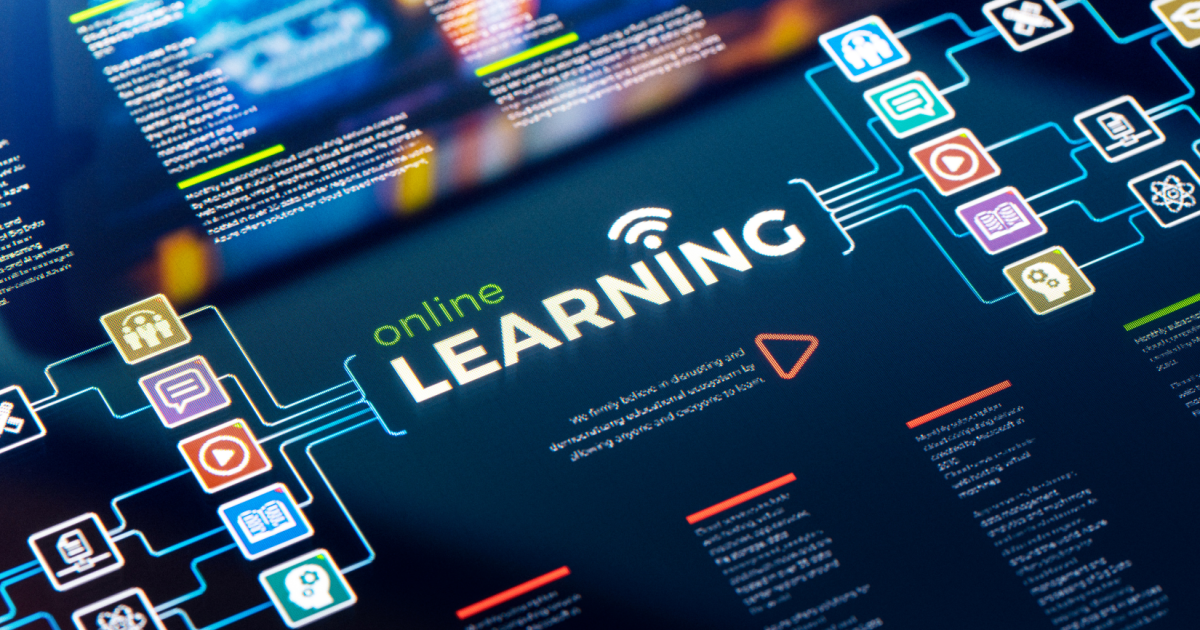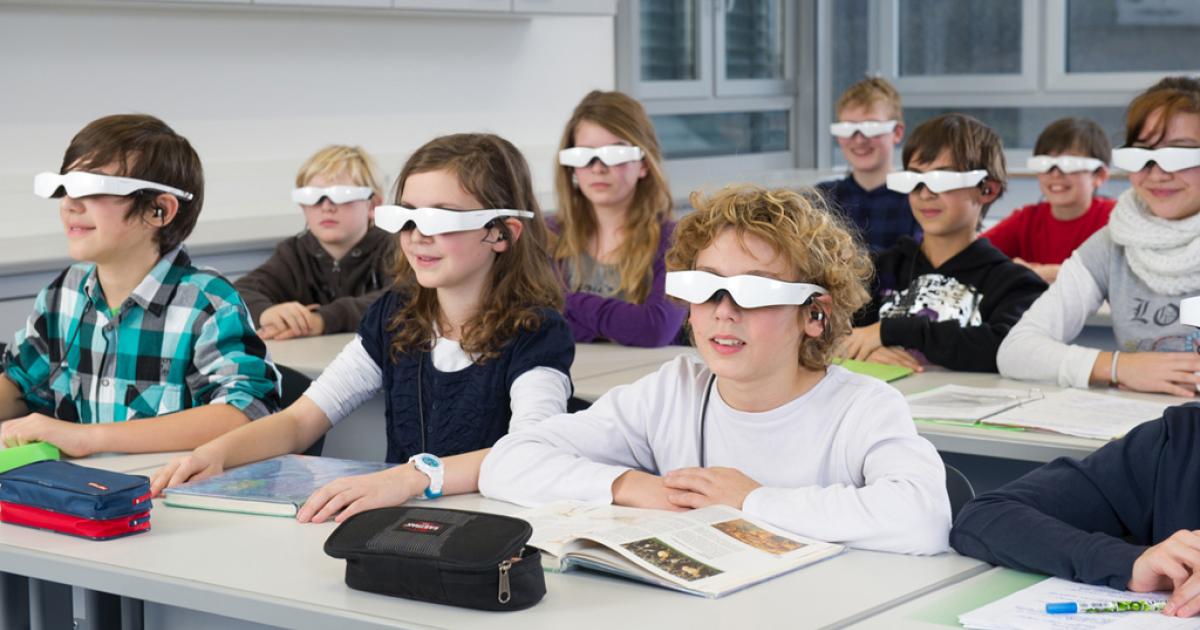The Future of Learning: Tech Trends in Education
Embracing the EdTech Boom
Setting the Stage for the Educational Revolution
In the grand theater of education, the spotlight shifts to center stage, where an educational revolution is unfolding. The backdrop is painted with the hues of innovation, and the script is written in the language of technology. This setting lays the foundation for a transformative era, where traditional teaching methods yield to the dynamic force of EdTech.
The Transformative Force of EdTech
EdTech emerges as the protagonist of this educational saga, wielding the power to reshape the way knowledge is imparted and absorbed. It’s not just about incorporating technology into classrooms; it’s about redefining the entire educational narrative. The transformative force of EdTech is felt in the way students engage with content, collaborate with peers, and navigate the vast landscape of information.
Key Players in the EdTech Landscape
As the curtains rise on this educational revolution, the stage is populated with key players who shape the narrative. Tech giants, startups, and educational visionaries take their places, each contributing a unique melody to the symphony of EdTech. Collaborations and partnerships become the instruments that create a harmonious composition, propelling the EdTech landscape forward.
Personalized Learning Revolution

Tailoring Education to Individual Needs
The spotlight now shifts to the concept of personalized learning, a revolution within the revolution. No longer confined to one-size-fits-all methodologies, education becomes a bespoke experience. Tailoring education to individual needs means recognizing and celebrating the uniqueness of each learner, fostering a more profound connection between students and the material.
Adaptive Learning Systems: A Glimpse into the Future
The future reveals itself through adaptive learning systems, the trailblazers of personalized education. These systems act as educational chameleons, dynamically adjusting to the pace, preferences, and learning styles of individual students. A glimpse into this future showcases a learning environment where adaptability is not just a feature but a fundamental principle.
Immersive Experiences in Education
Virtual Reality: Beyond the Hype
The stage now transforms into a virtual realm, going beyond the initial hype surrounding virtual reality (VR). In this chapter, VR becomes more than a technological novelty; it becomes a powerful tool for immersive learning. Students don VR headsets, transcending physical boundaries to explore historical events, conduct scientific experiments, or even visit far-off places—all from the comfort of their classrooms.
Augmented Reality for Enhanced Learning
As the narrative unfolds, augmented reality (AR) steps into the limelight, enhancing the learning experience. AR overlays information on the real world, turning textbooks into interactive guides and static images into animated models. The educational landscape is enriched as students interact with a reality that goes beyond what meets the eye.
AI-Powered Education
Chatbots and Virtual Assistants: Shaping Student Support
In the AI-driven act, chatbots and virtual assistants emerge as the supporting characters, providing valuable guidance and support to students. These digital companions become available 24/7, answering queries, offering clarification, and ensuring that no student is left without the assistance they need. Shaping student support becomes a collaborative effort between humans and AI.
Machine Learning for Personalized Curriculum Design
Machine learning takes center stage, orchestrating the design of personalized curricula. By analyzing vast datasets, machine learning algorithms identify patterns in student performance, adapting the curriculum to cater to strengths and address weaknesses. The result is a curriculum that aligns seamlessly with individual learning journeys.
Gamification in the Classroom
Making Learning Fun: The Gamification Revolution
The narrative takes a playful turn as the concept of gamification revolutionizes the classroom. Education becomes a game, and students willingly become players in their learning journey. Points, badges, and rewards replace traditional grading systems, making the pursuit of knowledge an engaging and enjoyable adventure.
Educational Games: Engaging Students in a New Way
Educational games step into the spotlight, demonstrating that learning can be both meaningful and enjoyable. These games go beyond rote memorization, encouraging critical thinking and problem-solving. The classroom becomes an arena where students actively participate, their enthusiasm fueled by the gamified elements of the educational experience.
Blockchain’s Impact on Education
Ensuring Transparency in Academic Records
As the plot thickens, blockchain emerges as the guardian of academic integrity. The decentralized and tamper-proof nature of blockchain ensures transparency in academic records, eliminating the risk of fraud or manipulation. Each academic achievement is securely recorded, creating a reliable and universally accessible ledger.
Decentralized Learning Credentials: A Game-Changer
Blockchain’s influence extends to learning credentials, introducing a game-changing shift. Credentials become decentralized, freeing them from the confines of individual institutions. This not only ensures the authenticity of qualifications but also opens new avenues for recognizing and valuing diverse learning experiences.
Big Data’s Role in Education
Leveraging Data Analytics for Student Success
Big data steps into the spotlight, playing a crucial role in enhancing student success. Educators harness the power of data analytics to gain insights into student behavior, preferences, and performance. This data-driven approach enables timely interventions, personalized learning strategies, and an overall improvement in educational outcomes.
Predictive Analytics: Anticipating Educational Needs
The narrative takes a forward-looking turn as predictive analytics becomes the compass guiding educational strategies. By analyzing historical data, educators can anticipate students’ needs, identify potential challenges, and proactively tailor interventions. The result is a more responsive and adaptive educational ecosystem.
Mobile Learning on the Go
Learning Anytime, Anywhere: The Power of Mobile Devices
The stage transforms into a mobile-friendly setting, where learning transcends physical boundaries. Mobile devices become powerful tools, enabling students to access educational content anytime, anywhere. The convenience of on-the-go learning becomes a cornerstone of the educational experience.
Mobile Apps Transforming the Educational Landscape
Apps take center stage, transforming mobile devices into portable educational hubs. From interactive lessons to collaborative projects, these apps redefine the educational landscape. The stage is set for a dynamic and interactive learning experience that fits seamlessly into the mobile-driven lifestyles of students.
The Integration of Social Media
Social Learning Platforms: Fostering Collaboration
As the narrative unfolds, social learning platforms emerge as bridges connecting learners globally. The classroom expands beyond physical walls, fostering collaboration on a global scale. Students engage in discussions, share insights, and collaborate with peers, enriching their educational experience through social connectivity.
Harnessing the Power of Networks for Educational Growth
Social networks evolve into educational ecosystems, where knowledge flows freely. Students and educators alike contribute to a collective pool of information, creating a network that transcends geographical boundaries. The power of networks becomes a catalyst for educational growth, enabling the exchange of ideas and perspectives.
Open Educational Resources (OER)
Breaking Barriers with Free and Accessible Learning Materials
The spotlight now turns to Open Educational Resources (OER), breaking down barriers to education. OER becomes the liberator, providing free and accessible learning materials. This chapter explores how OER democratizes education, ensuring that quality resources are available to learners regardless of their economic backgrounds.
Collaborative Learning in the Age of Open Resources
Collaboration takes center stage as OER becomes the foundation for a collaborative learning environment. Learners and educators unite, contributing to a collective pool of knowledge that transcends individual capabilities. Open resources become the threads weaving together a tapestry of collaborative education.
Robotics in the Classroom

From Coding to Creativity: Robotics in Education
The narrative shifts to the realm of robotics, where coding transforms into a creative endeavor. Robotics becomes a canvas for innovation, where students design, program, and bring their robotic creations to life. The classroom becomes a workshop for future engineers and inventors.
Humanoid Robots as Educational Assistants
Humanoid robots take center stage, becoming invaluable educational assistants. These mechanical companions guide students through lessons, answer questions, and provide personalized support. The teacher-student dynamic evolves into a collaborative partnership between humans and robots, enriching the educational experience.
Evolution of Learning Management Systems (LMS)
Beyond Traditional LMS: Next-Gen Solutions
The spotlight now shifts to the evolution of Learning Management Systems (LMS). Next-gen solutions redefine the educational ecosystem, offering seamless integration, enhanced functionality, and a user-centric experience. The stage is set for a new era of streamlined and efficient educational processes.
Cloud-Based LMS: Streamlining Educational Processes
The cloud becomes the canvas for the educational masterpiece. Cloud-based LMS streamlines processes, ensuring accessibility, security, and collaborative potential. This chapter explores how the cloud transforms the educational landscape, making learning resources available at the fingertips of both educators and students.
Digital Literacy Education

Navigating the Digital World: Essential Skills for Students
Digital literacy emerges as the guiding compass for students navigating the digital world. Essential skills, from information literacy to critical thinking, empower students to discern facts from digital noise. This chapter explores the significance of digital literacy as a fundamental skill in the 21st-century educational landscape.
Cybersecurity Education: Safeguarding the Next Generation
In the digital realm, cybersecurity education becomes the guardian of student data. This chapter delves into how educators instill knowledge of digital risks, ensuring that the next generation is equipped with the skills to navigate the online world securely. Cybersecurity education becomes a crucial component of preparing students for the digital age.
Tech-Savvy Teachers: Professional Development
Training Educators for the Digital Era
Teachers take center stage as the architects of the educational future. Professional development becomes a journey of continuous learning, equipping educators with the tools of the digital era. This chapter explores the importance of ongoing training in ensuring that educators stay ahead in the tech curve.
Empowering Teachers with Tech Skills
Tech skills become the arsenal of educators, empowering them to inspire and innovate in the digital age. From coding to multimedia production, teachers embrace a diverse skill set. This chapter delves into how tech-savvy teachers enrich the classroom experience, becoming catalysts for student engagement and learning.
Ethical Considerations in EdTech
Addressing Privacy Concerns in Educational Technology
The narrative takes a reflective turn as ethical considerations come into focus. Privacy concerns become a central theme, and this chapter explores how EdTech architects prioritize the sanctity of student data. Robust measures are implemented to ensure privacy and ethical data usage in the digital educational landscape.
The Responsible Use of AI in the Classroom
Artificial Intelligence (AI) becomes an ethical collaborator in education. This chapter delves into the responsible use of AI, ensuring that it augments the learning experience without compromising ethical standards. The relationship between humans and AI in the classroom is explored, highlighting the ethical considerations that shape this partnership.
Global Learning Communities

Connecting Students Worldwide: The Impact of Global Learning
Boundaries dissolve as global learning communities take center stage. This chapter explores how students connect across continents, sharing perspectives and enriching their educational journey through a multicultural lens. The global learning experience becomes a transformative force, broadening horizons and fostering cultural understanding.
Virtual Exchange Programs: Broadening Perspectives
Virtual exchange programs become the passports to cultural enrichment. Through digital connections, students embark on virtual journeys, interacting with peers from diverse backgrounds. This chapter explores how virtual exchanges broaden perspectives, creating a globalized educational experience that transcends geographical limitations.
The Future of Examinations and Assessment
Moving Beyond Traditional Testing Methods
The examination hall undergoes a transformation as traditional testing methods give way to dynamic assessments. This chapter explores how assessments mirror real-world challenges, providing a more holistic view of a student’s capabilities. The narrative unfolds, showcasing a future where examinations become a reflection of practical skills and critical thinking.
Continuous Assessment: Real-Time Evaluation of Student Progress
The era of continuous assessment dawns, offering real-time insights into student progress. Educators adapt and tailor their approach based on ongoing assessment data, ensuring students receive personalized guidance. This chapter explores the shift towards continuous assessment as a means of fostering a deeper understanding of each student’s educational journey.
Challenges and Solutions in Tech-Driven Education
Overcoming Digital Divides in Education
As the plot thickens, challenges come to the forefront. This chapter explores the digital divides in education and the innovative solutions that bridge the gap. Community-driven initiatives, government policies, and technological advancements become tools for overcoming barriers, ensuring equitable access to tech-driven education.
Balancing Screen Time: Healthy Tech Habits for Students
The spotlight turns to the delicate balance between technology and well-being. Educators and parents collaborate to instill healthy tech habits, fostering a positive and balanced learning environment. This chapter explores the importance of mindful technology use and strategies for maintaining a healthy relationship with screens.
The Teacher-Student Relationship in the Digital Age

Fostering Connection in a Virtual Classroom
The virtual classroom becomes a stage for fostering meaningful connections. This chapter explores how teachers adapt strategies to ensure that despite the digital barrier, the teacher-student relationship remains at the heart of education. Innovative approaches to virtual engagement create a sense of community and support in the digital age.
The Role of Emotional Intelligence in EdTech
Emotional intelligence takes center stage in the digital realm. This chapter delves into how EdTech solutions are designed not just to impart knowledge but to understand and respond to the emotional needs of students. The narrative unfolds, highlighting the importance of emotional intelligence in creating a holistic and supportive educational experience.
Looking Ahead: What’s Next in Educational Technology
Emerging Technologies on the Horizon
The final act unfolds with a glimpse into the horizon of emerging technologies. This chapter explores the advancements in Artificial Intelligence, Virtual Reality, Augmented Reality, and other cutting-edge technologies shaping the future of education. The stage is set for a tapestry of innovations that promise to redefine the educational landscape.
Envisioning a Future Where Tech Enhances, Not Replaces, Education
The grand finale envisions a future where technology harmonizes with the essence of education. This chapter explores a future where tech enhances, rather than replaces, the human touch in education. The narrative concludes by emphasizing the potential of technology as a catalyst for unprecedented possibilities in the ongoing journey of learning.
FAQ – The Future of Learning: Tech Trends in Education
What is the main focus of the blog post “The Future of Learning: Tech Trends in Education”?
This blog post explores the evolving landscape of education, delving into the transformative impact of technology. It covers a wide array of tech trends that are shaping the future of learning, from personalized education and immersive experiences to AI-powered learning and the integration of social media.
How is the content structured within the blog post?
The content is structured into 20 chapters, each dedicated to a specific tech trend in education. Each chapter consists of detailed subheadings that provide insights, examples, and perspectives on the respective trend, ensuring a comprehensive exploration of the topic.
What are some of the key trends covered in the blog post?
The blog post covers a range of trends, including personalized learning, immersive experiences using virtual and augmented reality, AI-powered education, gamification in the classroom, blockchain’s impact, big data’s role, mobile learning, the integration of social media, open educational resources (OER), robotics in the classroom, and much more.
How does the blog post address ethical considerations in educational technology?
One chapter is dedicated to ethical considerations in EdTech, addressing privacy concerns, responsible use of AI, and the importance of maintaining ethical standards in the digital educational landscape.
Is the blog post focused on global perspectives in education?
Yes, a chapter is dedicated to global learning communities, exploring how technology connects students worldwide and the impact of virtual exchange programs in broadening perspectives through multicultural interactions.
How does the blog post envision the future of education technology?
The final chapter looks ahead to emerging technologies on the horizon, discussing the potential of Artificial Intelligence, Virtual Reality, Augmented Reality, and more. It emphasizes a future where technology enhances, rather than replaces, the human touch in education.
Is there information on challenges and solutions in tech-driven education?
Yes, a dedicated chapter explores challenges such as digital divides and offers insights into overcoming these obstacles. It also discusses the importance of balancing screen time for healthy tech habits among students.
How does the blog post address the teacher-student relationship in the digital age?
The blog post discusses how teachers can foster meaningful connections in a virtual classroom and emphasizes the role of emotional intelligence in EdTech to create a supportive and holistic educational experience.
Can this blog post be a resource for educators and parents?
Absolutely. The comprehensive exploration of tech trends in education, along with insights into challenges and solutions, makes this blog post a valuable resource for educators, parents, and anyone interested in the future of learning.
Is there a specific format used in the blog post to enhance readability?
Yes, the content is presented in a professional and organized format, with engaging headings and subheadings. The use of short and long sentences creates a conversational tone, making the information accessible and enjoyable for readers.
Stay Tuned On Our Content
In our exploration of the future of learning and technology trends in education, we’ve discussed the transformative impact of EdTech. To delve deeper into the role of technology in empowering educators, check out our companion piece, “Empowering Educators: How Tech Enhances Teaching” on Amazing X Jobs . This insightful read provides a valuable perspective on how technology is reshaping the teaching landscape and empowering educators to create dynamic and engaging learning experiences.






Os comentários estão encerrado.